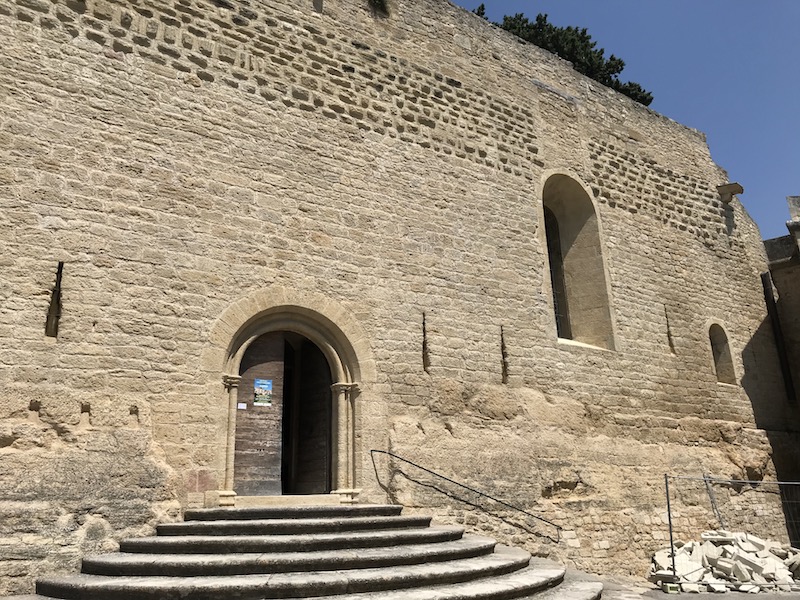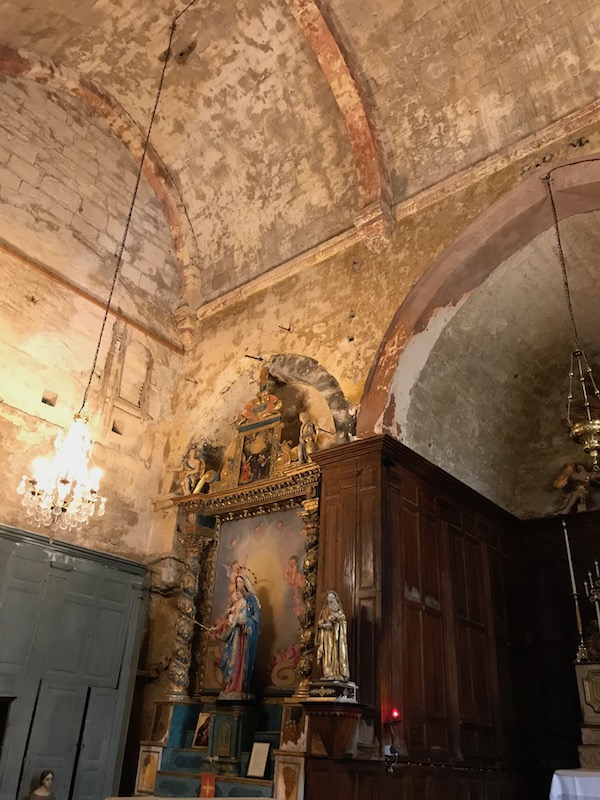Our Blog - Ansouis, France
This is another very old town ... excavations have uncovered a Paleolithic era site (-8,500 years) with cut-flint tools as well as a Neolithic station where polishers, grindstones, and pottery were recovered. Greek coins found here also provide evidence of trading between the Ligurian population and the Massaliotes. The first documented mention of the village was in 963, when some land was given to the church to build the Saint-Pierre de Montmajour abbey.
There were 3 gates in the medieval walls, of which only one is remaining. This one, from the 14th century, is called the "petit portail" or "small gate". As normal ... Tom and Lucy are heading in the gate.

While this looks like a church, it was actually the meeting place of the the community council starting in 1540. The belfry, a semi-circular tower capped with a wrought-iron campanile, was added in the 17th century. The village clock dates from that time and is still working.

This is the Maison des Consuls and dates back to the 15th century. On one side, there are several archways which would suggest shops were there.

The castle was first mentioned in a charter dating back to 961. The earliest fortifications date back to the 12th century and include a church and some terraces. The military fortress was gradually enlarged up through the 16th century, which included a buttress and watch turret to protect the main entrance. From the 16th to the 18th centuries, it was a residence and had groves of trees, gardens, and terraces.




Attached to the castle is the Église Saint Martin, and the current building dates back to the end of the 13th century. The exterior is pretty drab and you can't really tell it is a church. But you can tell from the inside (which doesn't look like it has been renovated recently) that it was a nice church, with a high vaulted ceiling and painted walls. This church is a perfect example of a discussion that goes on about renovating old things ... do you renovate the church, repainting everything, to make it look like it did when it was "new" ... but then it looks like a new church. Versus leaving it like this ... where you can imagine how it looked when it was all "shiny and new" but you can tell that it is very old.





